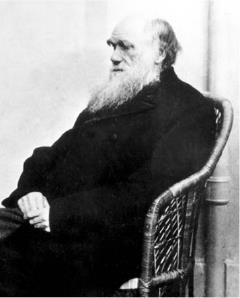Science and InventionCharles Darwin |
How did Charles Darwin develop his theory of evolution? |
The English naturalist Charles Darwin (1809–1882) was attending Cambridge when, through a friend, he gained appointment as naturalist aboard the HMS Beagle. The around-the-world voyage began in 1831, and Darwin was able to gather data on flora, fauna, and geology in the world’s southern lands—the South American coasts, the Galapagos, the Andes Mountains, Australia, and Asia. The trip lasted into 1836, and in the years that followed Darwin published and edited many works on natural history—though none of them put forth his theory of evolution. (It’s interesting to note that Darwin’s paternal grandfather, Erasmus Darwin [1731–1802], was a physician, botanist, and poet, who in 1803 wrote verse that he titled, “The Temple of Nature or the Origin of Society,” which anticipated the theory of evolution that his grandson would put forth.)
Encouraged by Sir Charles Lyell (1797–1875), who is considered the “father of modern geology,” Charles Darwin wrote out his theory. Coincidentally, he received the abstract of an identical theory of natural selection, formulated by English naturalist Alfred Russell Wallace (1823–1913)—who had arrived at his conclusions independently of Darwin. Wallace had made his formulation of evolution based on his study of comparative biology in Brazil’s Amazon River and the East Indies (Malay Archipelago). In 1858 Darwin published both his work as well as the abstract written by Wallace. The following year he backed up his theory in On the Origin of Species by Means of Natural Selection, which was found to be scientifically credible. It was widely read by the public, which snatched up so many copies that the first printing of the first edition sold out in only one day. Darwin added to this work with The Descent of Man in 1871.
What Darwin put forth was that all life originated with a simple, primordial protoplasm (the fundamental material of which all living things are composed). In his theory of natural selection, Darwin posited that those species that are best adapted to the environment are the species that survive and reproduce.
While organic evolution and natural selection had a profound impact on the world of science (which further studied and supported the concepts), they jarred much of the religious community and created a controversy. Creationists, who believe the origin story put forth in the Bible—the story of Adam and Eve in the Garden of Eden, objected to Darwin’s theories. Debate between evolution and creationism ensued, most notably in the so-called Scopes “monkey trial” of July 1925: Dayton, Tennessee, public schoolteacher John T. Scopes (1900–1970) was charged with violating a state law that prohibited the teaching of evolution. He was defended by one of the most acclaimed attorneys of all time, Clarence Darrow (1857–1938), but the prosecution was led by another prominent lawyer, William Jennings Bryan (1860–1925), and Scopes lost the case. But Scopes was later released on a technicality. The law was eventually repealed (in 1967).
Though scientific research has largely substantiated the theory of evolution described by Charles Darwin, the theory of creation still has its followers, mostly religious fundamentalists.

